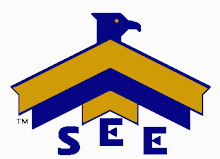Unchained Melody
One of the most important rules of coaching involves connecting positive and corrective feedback messages. This method has been used for years and even achieved a name: The Sandwich Method. This describes the abhorrent practice of placing corrective feedback between two pieces of positive feedback.
Nothing could be more ineffectual than combining or enjoining types of feedback. The self-critical will only remember the corrective piece. The halo effect types will only remember the positive feedback. At a bare minimum, the person receiving the feedback will be confused. “Did
I receive praise or did I get chewed out?”
The most common expression of chained feedback comes in the form of “you did a great job with that customer, but you needed to complete the order form in a more timely manner.” The big but. You can even see some team members expecting it. When they hear a piece of positive feedback, they wait for the other shoe to drop and hear the but statement.
The interesting part of this method is for whom it is designed. It certainly does not help provide a clear message to the team member receiving the feedback. It certainly doesn’t insure good spirit and the replication of great results from the person receiving the feedback. This method was designed for the ease of delivery from the person providing the coaching. Easy; yes. Effective; absolutely not.
Feedback needs to be delivered in separate event formats. If the performance was good, the team member receives positive feedback without chained conditions or comparisons. If the performance was not good, the team member receives corrective feedback without glossy coating. Positive feedback and corrective feedback. The two shall not be joined together.
Correctly so, some people have discussed performance where the bulk of the performance was good but there were legitimately some things the team members could have done better. This is a situation in which the leader must use some judgment and decide what type of feedback is most appropriate and what type of feedback could be better deferred to a teaching or mentoring type of session. When the bulk of the performance is positive, provide positive feedback and wait on any discussion of things that could be tuned or done better.
Eligible Populations-The Superstars
One of the bigger stigma points related to positive feedback is wrapped around the eligible populations and who receives it.
Most organizations, regardless of type and size, have between five and ten percent of their team members that are exceptional contributors. The “A” players. These are the people that consistently achieve more, work harder and generally aspire to higher responsibility levels. Not only do they receive positive feedback regularly, they often demand it. They are the team members that will often tell you what they have done well or the leader is well aware of their awesome performance.
One temptation to avoid is to take superstar type of performance for granted. Believing that these star players provide their own internal feedback or that more feedback for more good performance may spoil them will lead them down the path of “why bother.”
Eligible Populations-The Average Joe
Most organizations also have a large population of team members that are “just doing their job.” Nothing spectacular. No superstar status. Just doing what we need them to do. These team members are often the polarity of a working unit and are likely to be eighty to ninety percent of a total team population.
The epiphany question about this population is whether or not they are deserving of positive feedback. The simple answer to this is yes. The more complex answer is yes.
The population of standard performers is the population that is most at risk of leaving the organization because they are not appreciated, engaged or acknowledged. They toil away at what we need and ask of them but rarely hear from us unless something is wrong. This population is also at risk to deteriorate their performance to levels beyond acceptable.
The only way to encourage their continued contributions to organizational success is to provide them with the positive feedback earned from achieving their objectives.
Eligible Populations-The Problems
To complete the bell curve, we also have between five and ten percent of team members that perform below standard or are problematic on behavioral levels.
A typical pattern develops with these team members. After they have been coached, counseled and documented, supervisors and managers go out of their way to hyper-scrutinize their performance. Looking for additional mistakes, stumbles and failures. When found, more coaching, more discipline and more forms are engaged.
And that course of action has achieved what? Further disgruntled and detached team members. Team members that feel hopeless. Team members that become our biggest critics and are toxic in the working environment is what we are creating with this method.
Documentation and formal discipline has a place and need. It is necessary from a compliance perspective. It is necessary to show good faith and fairness. What it does not do is make someone a better or more successful team member.
With the same vigor that is used find more mistakes and issues, effective leaders go out of their way to provide positive feedback when a problem team member does something well. This technique will have a greater success rate than the continued hyper-scrutiny of a team member’s performance. Not a panacea with tough team members but another tool to use.
Subscribe to:
Post Comments (Atom)






No comments:
Post a Comment